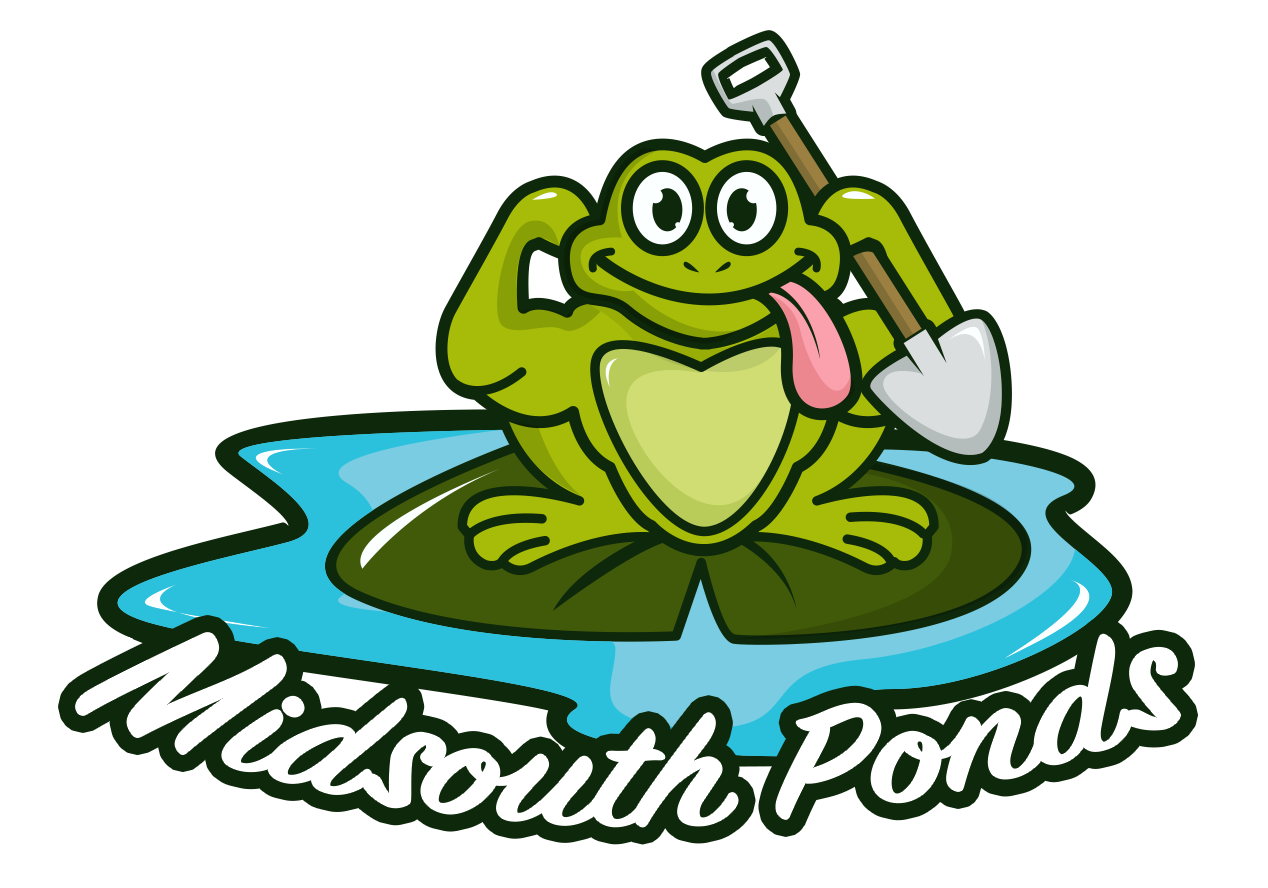A water garden is the perfect backyard addition for anyone who loves spending time outdoors surrounded by the beauty of nature. Whether a novice or experienced landscape designer, a water garden is a relatively easy and low-maintenance way to enhance your outdoor living space.
With a bit of imagination—and some basic knowledge of landscape design and gardening—it’s easy to create a one-of-a-kind backyard oasis that will turn heads and soothe the soul.
Keep reading to learn everything you need to know about designing, building, and maintaining a water garden of your own.
What Defines A Water Garden?
A water garden is a type of garden that features water as the primary element. Water gardens can be created in various ways, from simple container gardens to elaborate garden ponds with waterfalls or streams.
A water garden can be used to control flooding, but they’re most commonly created for their aesthetic value. A water garden can be placed indoors or outdoors, and it can be used to create a variety of different effects.
No matter what type of water garden you choose to create, there are 3 key elements that all water gardens have in common:
- Water gardens must have a water source. This can be anything from a small fountain to a large garden pond
- Water gardens must have planting areas. These can be submerged sites where water plants can grow or dry areas where you can plant drought-tolerant plants. Common plants in water gardens include lilies, lotuses, and rushes. Fish are also often kept in water gardens, as they can help to control mosquito populations
- Water gardens often include some type of hardscapes, such as rocks or pavers, to help define the space and create visual interest
With these three elements in place, you can create a water garden that is both beautiful and functional.
The Best Plants To Use In A Water Garden

A water garden is a beautiful and serene addition to any home. The best plants to use in a water garden will vary depending on the style you are trying to achieve.
Water lilies are a great option if you are looking for something classic and elegant. They come in various colors and sizes, and their large leaves provide ample water surface coverage. For a more whimsical look, consider using aquatic plants like water hyacinths or water lettuce.
Whatever plants you choose, be sure to select varieties that are suited to your climate and growing conditions.
While you can put any terrestrial plants suitable to your climate in the dry areas of your water garden, you will need to select aquatic plants for the wet parts of your water garden. Most aquatic plants fall into three general types: submerged, floating, and emergent. Many water gardens include a mix of each type.
Keep reading for an explanation of each type of aquatic plant and the benefits associated with each:
Submerged Plants
Submerged plants are plants that grow under the water surface. They help keep the water clean by absorbing excess nutrients, which would otherwise cause an algae bloom. These plants also release oxygen into the water, improve water quality, and provide a habitat for fish and other aquatic creatures.
Popular submerged plants for water gardens include:
- Pondweed
- Watermilfoil
- Marshweed
- Pennywort
Floating Plants
Floating plants grow on or near the surface of a body of water. These plants help to shade the water, which reduces algae growth. Their roots act as natural filters, trapping waste materials and providing a home for beneficial bacteria. Floating plants also help to oxygenate the water and provide shelter for fish and other aquatic creatures.
Popular floating plants include:
- Water hyacinth
- Yellow lotus
- Fragrant waterlily
- Water lettuce
Emergent Plants
While submerged plants grow entirely underwater, and floating plants float freely on the water surface, emergent plants grow out of the water. Emergent plants are an excellent option for a water garden because they grow in shallow water, and their roots help to stabilize the soil. They can also provide food and habitat for fish, frogs, and other aquatic creatures.
Some common emergent plants include:
- Sedges
- Cattails
- Rushes
Designing A Water Garden
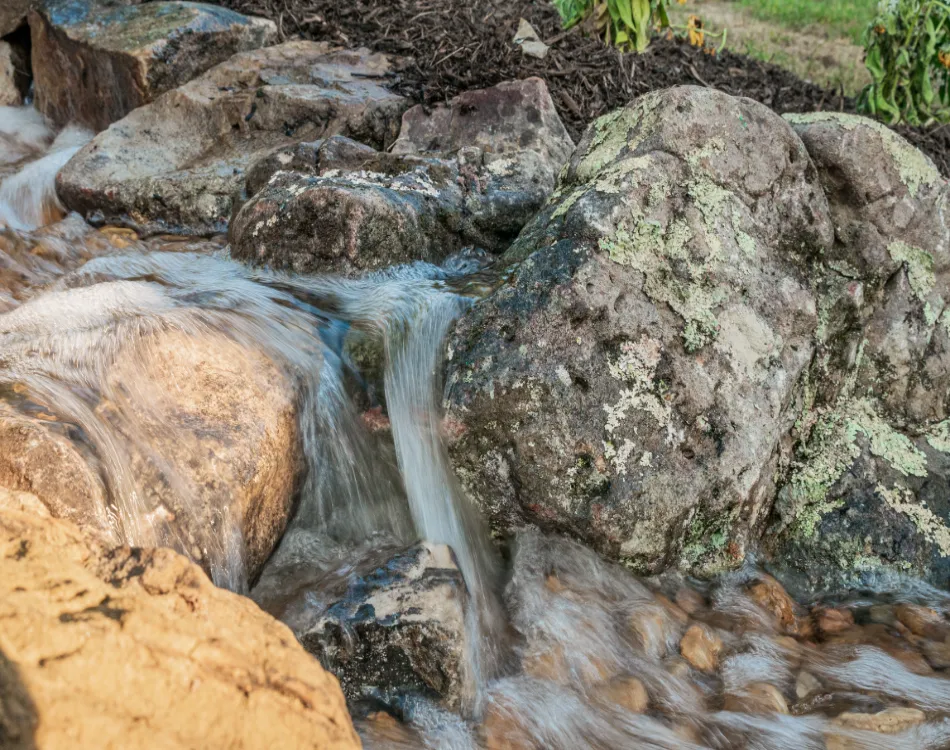
When designing your water garden, the sky’s the limit! However, there are a few things to keep in mind to ensure that your water garden is beautiful and functional.
Size
Consider the size of your space. Will it be a large or a minor water feature? A water garden can range from a small container garden to a large pond. If you have a large enough space, a swim pond might even be right for you!
If you have a large space, you can put in any type of water garden. However, you can probably rule out installing a large pond or stream if you’re dealing with limited space.
Type
Think about what type of water feature you would like to include. Options include waterfalls, fountains, streams, and ponds. However, a simple container on your porch or deck can also function as a water garden if you are working with a small space.
Plants And Fish
Decide what kind of plants and fish you want to include. Water lilies and goldfish are a classic combination, but there are many other options to choose from.
You should also consider the climate in your area when selecting plants and fish. If you live in an area with hot summers, you must choose plants and fish that can tolerate high temperatures and humidity. Conversely, if you live in a cold climate, you must select plants and fish that can withstand freezing temperatures.
Of course, not every water garden needs or can sustain fish, but some of the more popular fish options are:
- Goldfish
- Koi
- Red Shiners
- Golden Orfe
Stones, Rocks, And Gravel
Don’t forget to add some rocks, stones, or gravel to help create a natural look. Besides aesthetics, rocks, stones, and gravel can also provide a habitat for any aquatic creatures in your water garden. Gravel can also function as a natural filter for the water.
Designing a water garden can be a challenging but rewarding task. With some planning, you can easily create a water garden that is both aesthetically pleasing and practical.
Can I Build A Water Garden In My Backyard?
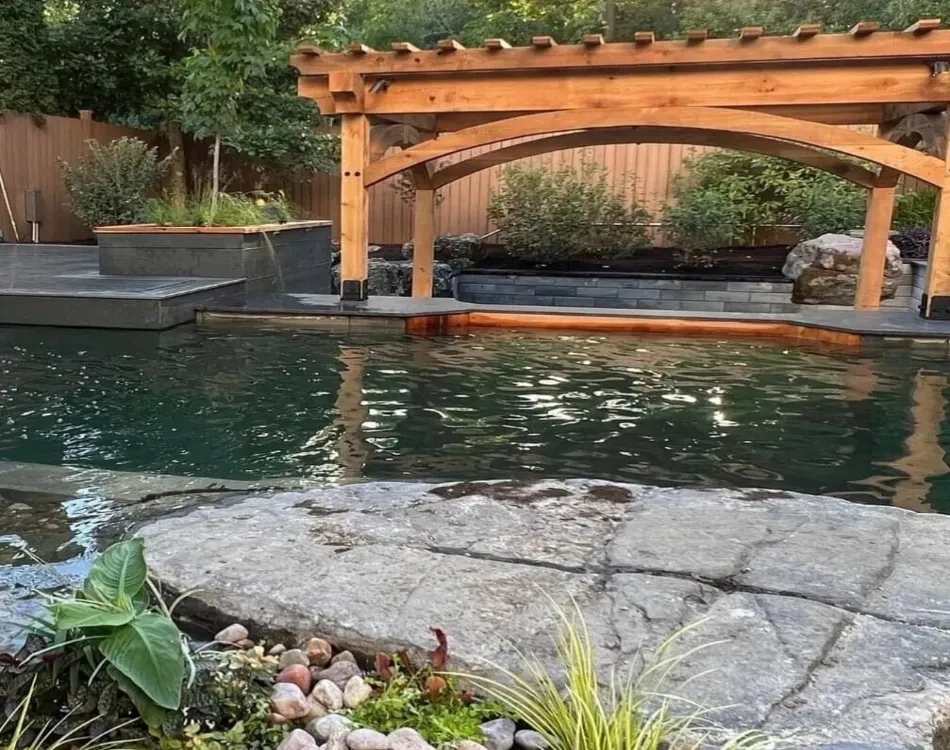
If you’re thinking of adding a water garden to your backyard, you’ll need to consider a few things before you get started.
Tools And Materials
Do you have the right tools? Most water gardens require special equipment, including a pump, liner, and filtering system.
If you don’t have these things, you’ll need to buy them or rent them. You might also need some heavy-duty gloves and boots to protect your hands and feet from the water.
Sunlight
You’ll need to consider the amount of sunlight that your backyard receives. Will the water garden be exposed to full sun or partial shade?
Most water garden plants require about six hours of direct sunlight per day to thrive. Answering this question will help you determine whether a water garden is feasible in your backyard.
Space
Finally, you’ll need to ensure enough space in your backyard to accommodate the type of water garden you want to install. You might need to get creative with your design if you have a smaller yard.
If you have all of the necessary ingredients for a water garden, then chances are good that you can build one in your backyard. Happy gardening!
Water Garden Benefits
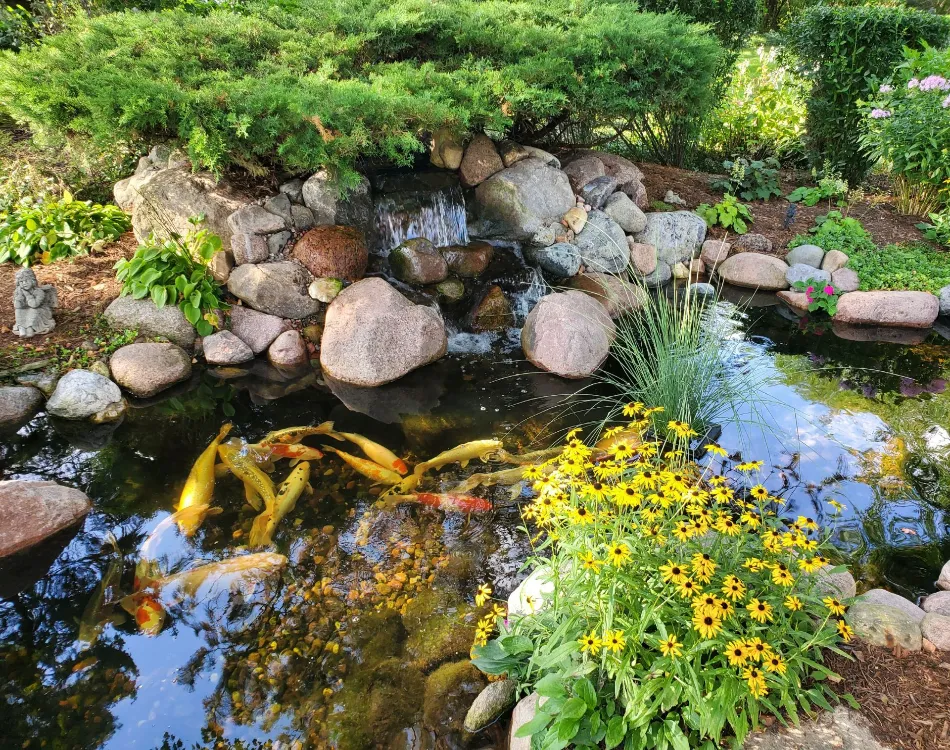
Building a water garden is a great way to add visual interest and relaxation to your backyard. It can also be quite therapeutic to get away from the hustle and bustle of everyday life and enjoy the peaceful sound of moving water!
However, there are several other water garden benefits you may not have considered:
Attracts Wildlife
A water garden can help to attract wildlife to your yard. Birds and butterflies are drawn to the water, which can help pollinate your plants. Animals are also naturally drawn to water, so adding a water garden to your yard is an excellent way to attract them.
Not only can a water garden provide you with hours of enjoyment watching insects and animals, but it can also help reduce the number of pests in your yard, as some animals will eat insects. A water garden with wildlife also helps your yard feel more like a natural oasis.
Source Of Water For Plants
One of the most apparent benefits is that it provides a source of water for your plants. While most gardens need to be watered regularly, a water garden can help reduce the amount of water you need to use.
The water also provides a valuable source of moisture for your plants during dry periods.
Can Increase Home Value
A water garden can be a beautiful addition to any home and increase your property value. If you’re thinking of selling your home, a water garden can be a valuable selling point.
Buyers will be attracted to the added value and beauty of a water garden, which will likely result in a higher sales price. Even if you’re not planning on selling your home, it’s always nice to know that you’ve made an improvement that could possibly increase your home’s value.
Adds Beauty And Tranquility
A water garden can simply add a touch of beauty and tranquility to your landscape. The sound of running water is relaxing, and the sight of vibrant flowers is sure to please the eye.
A water garden also makes the perfect gathering place when entertaining guests. Whether looking for function or beauty, a water garden is an excellent option for your yard.
How To Maintain Your Water Garden
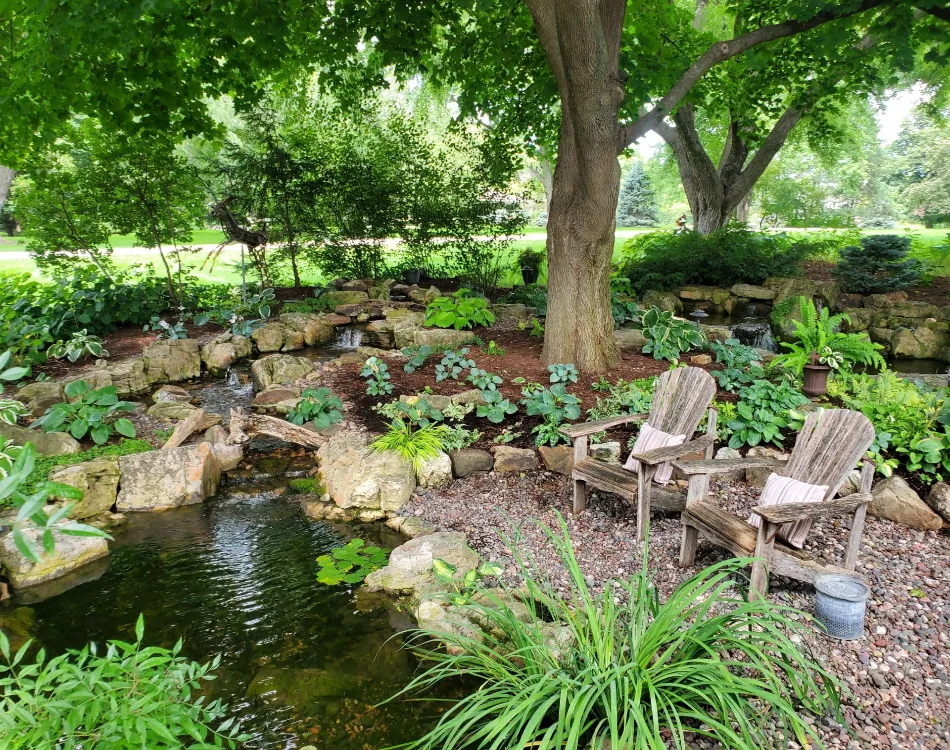
A water garden is a beautiful addition to any home. With proper care, it can be a low-maintenance way to enjoy the outdoors.
While the best way to maintain your water garden will depend on the size and type that you have, here are some general tips on how to keep your water garden looking its best:
Remove Debris
One of the most important things you can do to keep your water garden looking great is to keep the water clean. The best way to do that is to regularly remove any organic debris or other material that may fall in.
You can use a small net if your water garden is small. A large water garden may require a pond skimmer or specialized cleaning equipment.
Clean Pumps And Filters
While not every water garden will utilize pumps and filters, keeping this equipment clean is essential to maintain your water garden.
Pump cleaning can be done by simply disassembling the unit and giving all parts a good rinse with a hose. Filters should be rinsed or replaced, depending on how dirty they are.
Clean Stones And Rocks
Pressure wash or scrub any stones or rocks with algae or other gunk on them with a brush. If you have gravel in your water garden, don’t worry about trying to clean it.
Beneficial bacteria often live on gravel, which can help maintain the clarity and health of your water garden.
Top Off With Water
You’ll need to maintain the water level in your water garden. During hot weather, evaporation can cause the water level to drop quickly, so check it regularly and top it off as needed. In cooler weather, you may need to add water to make up for rain or snowmelt.
Be sure to dechlorinate the water before adding it to your water garden. You can do this by adding chlorine remover to the water or by letting it sit out for 24 hours, so the chlorine evaporates.
Winterization
If you live in an area that experiences freezing temperatures in the winter, it might be necessary to winterize your water garden. Otherwise, you risk killing your fish or damaging components like pumps or aerators.
The process for winterizing a water garden differs widely depending on what type of water garden you have. The best policy is to follow the specific winterization process for the size and type of water garden you have.
Interested In Installing A Water Garden? Midsouth Ponds Can Help!
A water garden can be a beautiful and tranquil addition to any backyard. By choosing the right plants and following some simple design principles, you can create your own oasis that provides hours of enjoyment for you and your family.
If you’re ready to add a water garden to your yard, fill out our contact form today. We would be happy to help you get started on this exciting project!
